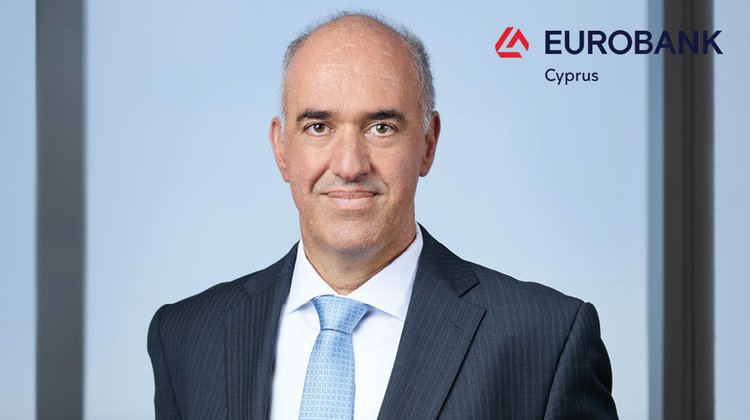Eurobank Cyprus: Peak headline inflation behind us but central bank rate hikes still there
10:27 - 06 March 2023

Antonis Antoniou, General Manager Wealth Management & Global Markets at Eurobank Cyprus, explains why a recession in Europe this winter can be avoided, although this is highly dependent on several factors, while the US continues to straddle growth and inflation.
In 2022, the US bond market turned in its worst-ever performance. What was behind this?
In 2022, the bond market faced rare challenging conditions that increased volatility to crisis levels, significantly higher compared to any other tightening cycle in modern central bank history. The global Coronavirus outbreak took the whole world by surprise and the unpreparedness of economies and governments resulted in the freezing of global supply chains. The imbalance between demand and supply created on the back of the COVID-19 lockdowns could not be matched by ‘crippled’ industrial production. The outcome has been the most aggressive acceleration of inflation since the 1970s. Handed the responsibility of price stability, central banks tightened their monetary policy by increasing interest rates and removed liquidity at an unprecedented speed. Bonds, being the most interest-sensitive asset class, naturally experienced the worst performance in remembered history. Last but not least, geopolitics have further complicated the process of returning to normality, as evidenced by Europe’s energy crisis.
How would you describe the investment outlook for bonds in 2023?
To formalise an investment outlook, we must identify where we stand in terms of bond-specific dependable variables. The US is currently a story in two parts. On the one hand is growth. Leading growth indicators are declining and a recession is highly anticipated. However, the ‘hard data’ has been holding up and the US is still at full employment. On the other hand, there is inflation. In the absence of another energy shock, or a geopolitical event that introduces new supply chain frictions, a re-acceleration near the highs is a low-probability outcome. However, inflation might have entered a secular growth trend, with the US experiencing a prolonged period of persistent inflation above 2%. Factoring into this secular inflation outlook is (a) US under-investment in energy infrastructure, creating a supply shortage of crude oil and its by-products and (b) ‘sticky’ inflation, especially from goods like food, and services like transportation, healthcare and education. Europe is still in the trenches. The huge drop in natural gas prices, the relatively warm weather, government support measures and investments from Next Generation EU are aiding a recovery in Europe. A recession might be avoided this winter but the outlook for Europe is highly dependent on the outcome of the ongoing Ukraine conflict and energy prices. Despite the temporary positive outlook in Europe, the European Central Bank (ECB) is currently the most ‘hawkish’ developed central bank in the world, suggesting that euro rates will continue to rise after their US equivalent has peaked.
To summarise, for both the US and the EU, peak headline inflation looks like being behind us but central bank rate hikes are not. Also, the focus has shifted from inflation risks to recession risks. This leads us to formulate a positive fixed income outlook for 2023 relative to 2022. Many of these factors are already incorporated in discounted prices and yields are currently at attractive levels compared to a couple of years ago.
What kind of bonds are of most interest to investors?
In the current uncertain environment, interest has been allocated to short and medium duration government bonds that are highly liquid and offer the ‘safety’ attribute that can act as a hedge during volatile periods. Furthermore, several sectors of the corporate credit market that were under-looked by investors during the pandemic are now emerging due to their risk/reward attractiveness. Of special interest are corporate bonds of companies that exhibit balance sheet strength, strong liquidity reserves, the ability to service their debt, and the potential for growth in revenues and branding.
What do you expect to perform best in a Fixed Income Portfolio in 2023?
Outlooks from all the major financial houses are publicly available and anyone can easily read their views and rationale behind them. I share the same view as regards the following: (a) European Government bonds with a maturity of 3-7 years in the Investment Grade universe for countries with relatively low Debt to GDP; (b) US Treasuries; (c) USD Emerging Market Government Bonds with a maturity of 1-5 years in the Investment Grade universe with low external Debt-to-GDP; and (d) European & US Credit, focusing on cyclical sectors like Financials, Materials, Infrastructure and Technology and non-cyclical sectors like Healthcare, Utilities and Communications.
(This interview first appeared in the February 2023 issue of GOLD magazine. Click here to view it.)

